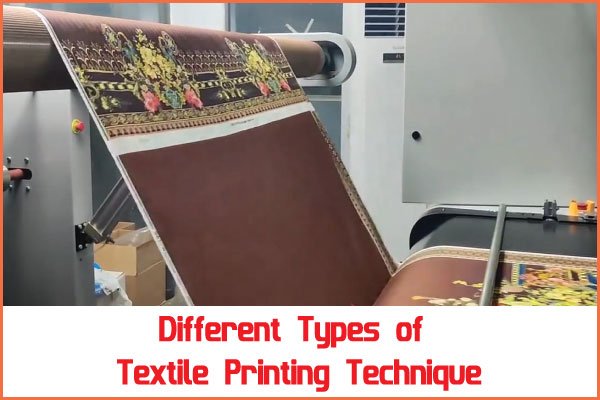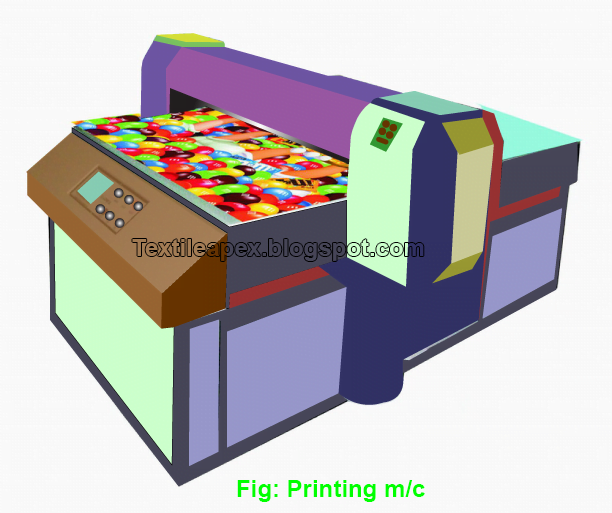A Guide to Reactive Printing Process
Last updated on March 13th, 2024 at 12:22 am
The printing process by which application of color or dye to fabric in a definite design or pattern is done with the help of reactive dye is called reactive printing. After the application of reactive print paste to fabric, the color creates bond with the cellulosic fibre and helps to resist washing and friction and also creates the fastness properties.

Reactive Print Paste Preparation Ingredients
- Sodium hexa meta-phosphate.
- Sodium alginate
- Urea
- Sodium bicarbonate
- Resist salted
- Ecaltex police
- Kollasol CDA
- Kerpshin emulsion
- Water
Sodium hexa meta-phosphate is used as sequestering agent to remove hardness of water.
Sodium alginate is used as thickener. It is also used in reactive print as thickener to make printing past.
Urea is used to increase the solubility of the dyes in water and thereby enhance the brightness and intensity of the dyes used.
Sodium bicarbonate is used as soda ash to increase the fixation of dyestuff into fibre molecule.
Ecaltex pol is used as printing oil to increase the softness and it also helps to pass printing paste through the screen mesh.
Kollasol CDA is used as de-foaming agent. It reduces the produced foam during making print paste.
Process Flowchart of Reactive Printing
Fabric washing
↓
Drying
↓
Printing (Printing paste and fabric preparation)
↓
Steaming
↓
Washing
↓
Stentering
↓
Compacting
Importance of Fabric washing & drying
- Increase the absorbency of fabric.
- Helps to remove the oil, wax, impurities of fabric.
- Increase the penetration of chemical.
- Helps to control PH of fabric to increase the dyes take up percentage.
Reactive Printing Procedure Step by Step
Fabric washing and drying before printing
↓
Gumming cutting need to do if their scope of gumming cutting allowance
↓
Before production shade match of fabric with standard fabric
↓
Screen check
↓
Color check according to design
↓
Make window before printing to match color with approval
↓
Print 2-meter fabric to color check before start bulk production. Then steaming and washing then color match with approval, if need any correction then do it and go to bulk production.
↓
Check design with approval and also settings if there any m/c setup problem
↓
Everything is ok then starts production
↓
Steaming
↓
Washing
↓
Finishing
Some Relative Terms
Steaming
Steaming of reactive print is done at 102 degree and middle time may be 10 to 20 minutes according to shade and design.
Washing
Washing is done to remove unfixed dye and to increase the color fastness properties. Normally TS as wetting agent and CRD as detergent are used.
Finishing
Finishing is done to control dia, GSM, shade, hand feel and having great quality.
Washing Procedure of Reactive Printing
Cold wash for 5 minutes
↓
Normal hot wash at 70 degree for 5 minutes
↓
Hot wash at 80-90 degree for 5 to 10 min with soap/detergent like TS/CRD 2-3 g/l
↓
Shade check
↓
Normal hot wash at 50 degree for 5 minutes
↓
Neutralization by acetic acid for PH=4
↓
Fixing agent 2g/l
↓
Unload
Finishing Procedure
During finishing process need to check the requirement according to approval
↓
Need check required dia, gsm, shrinkage, shade, and have to setup according to required parameter
↓
Softeners need to use according to print type, shade condition and required softness
↓
Need 2 meter finished fabric according to this parameter as trial
↓
Need to check all requirements, if all ok then start bulk finishing
↓
If need any correction, then change m/c settings or recipe according to required parameter
↓
If all is ok, then unload
↓
Start compacting according to required parameter
↓
Quality check
↓
Fabric delivery




Information could be elaborated.
I'll try later.
Thanks
sir pls advice reactive printing proceduremd polash khan royalfabric printermob 01815917276chattogram epz.
It’ѕ hагd to find knowledgeable people in this particular subjеct, however,
yoս sound like you know what you’re talking about!
Tһаnks